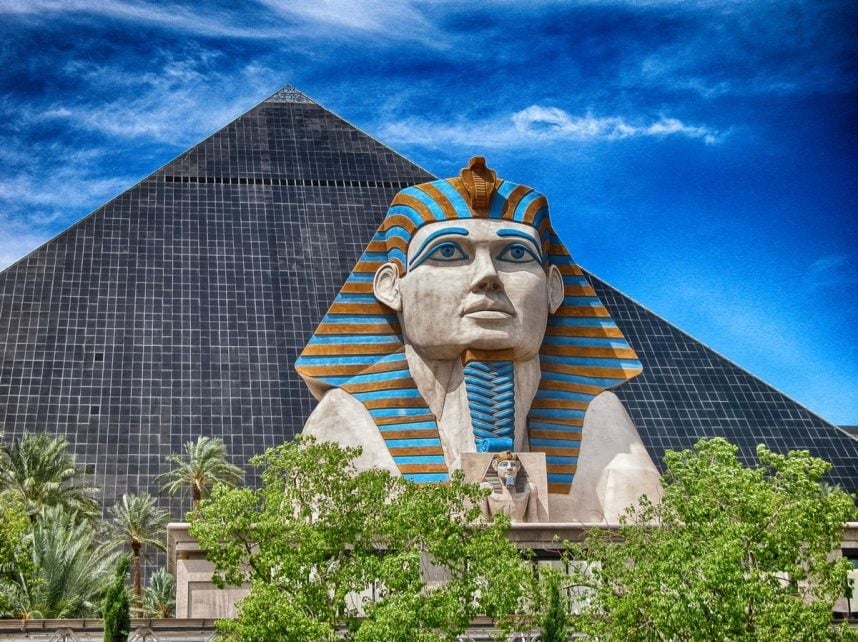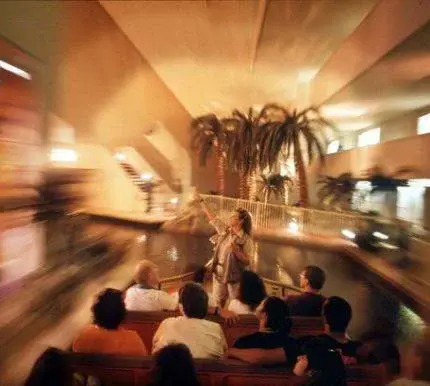VEGAS MYTHS BUSTED: The Luxor’s Sphinx Jinx
Posted on: October 13, 2025, 07:21h.
Last updated on: October 15, 2025, 04:45h.
- A longstanding myth claims the Luxor’s history of unfortunate events and occurrences can be blamed on the fact that the giant Sphinx outside the hotel faces in the wrong direction
- The myth claims that unlike the original Sphinx of Giza, which faces east, the Luxor’s replica faces west, which is an affront to the gods it’s supposed to honor
The Great Sphinx of Giza in Egypt faces east, toward the rising sun — a symbolic alignment tied to ancient sun worship and rebirth. Its famous modern Las Vegas replica, the Luxor Sphinx in Las Vegas, faces west, toward the Strip and away from the sunrise.

Social media blogs and vlogs, and guided ghost tours of Las Vegas, have for decades made this claim, blaming this solar misalignment for a string of unfortunate events that have occurred at the property.

These include:
- The death of 42-year-old construction worker Steven Yandell of Arizona, who was killed on Dec. 23, 1992, when a boom struck him during the property’s construction
- The Sept. 25, 1996, suicide of an unidentified woman who leapt from an interior balcony on the 26th floor and landed near the entrance to the buffet
- A motion-activated pipe bomb that exploded on May 7, 2007, in the Luxor parking garage, killing 27-year-old food-court worker Willebaldo Antonio
“The sphinx was built facing the incorrect direction,” a video posted by the “Buzzed Vegas” Facebook page informed its 151K followers just last week, “so a lot of people think the Egyptian gods are upset about it.”
Myth Interpretation
The design of the Luxor was part of then-owner Circus Circus Enterprises’ broader strategy to expand its portfolio of themed resorts to attract families following the success of its Excalibur (opened 1990) and preceding its Mandalay Bay (opened 1999).

The company purchased the land in early 1992, already knowing they would build a massive Egyptian-themed resort with a pyramid-shaped hotel and a Nile River ride tracing the pyramid’s perimeter. (The latter element was dismantled in 1996, three years after the resort opened — not, as the “Buzzed Vegas” video claims, “because of so many apparitions” and “so many creepy things on there” but because of low ridership and operational inefficiencies that disrupted guest flow.)
The replica Great Sphinx of Giza wasn’t initially part of the plan until later iterations. Its alignment was chosen for maximum exposure to traffic on the Las Vegas Strip. (Nobody would see it if it faced away from the Strip, and only half as many people would if it faced entirely north or south, the directions in which traffic flows on Las Vegas Boulevard.)
It can be safely assumed that no consideration was given to pointing it in the “correct” direction to appease ancient gods.

It’s beyond the purview of this column to debate the validity of claims solely on the basis of their paranormal nature. (Suffice it to say that, though we consider ourselves a person of science, we once witnessed something that cannot be explained by the current state of scientific understanding.)
But we took on this myth precisely because busting it requires no such debate whatsoever.
And that’s because, contrary to the myth, the Luxor’s sphinx doesn’t face west. It faces due east, just like the Great Sphinx of Giza.
Before you profess to be an expert in something, maybe start with mastering east from west.
Look for “Vegas Myths Busted” every Monday on Casino.org. Click here to read previously busted Vegas myths. Got a suggestion for a Vegas myth that needs busting? Email corey@casino.org.
Last Comment ( 1 )
What about the four construction workers that died during the building of the Luxor? The mist of any Las Vegas hotel-casino.